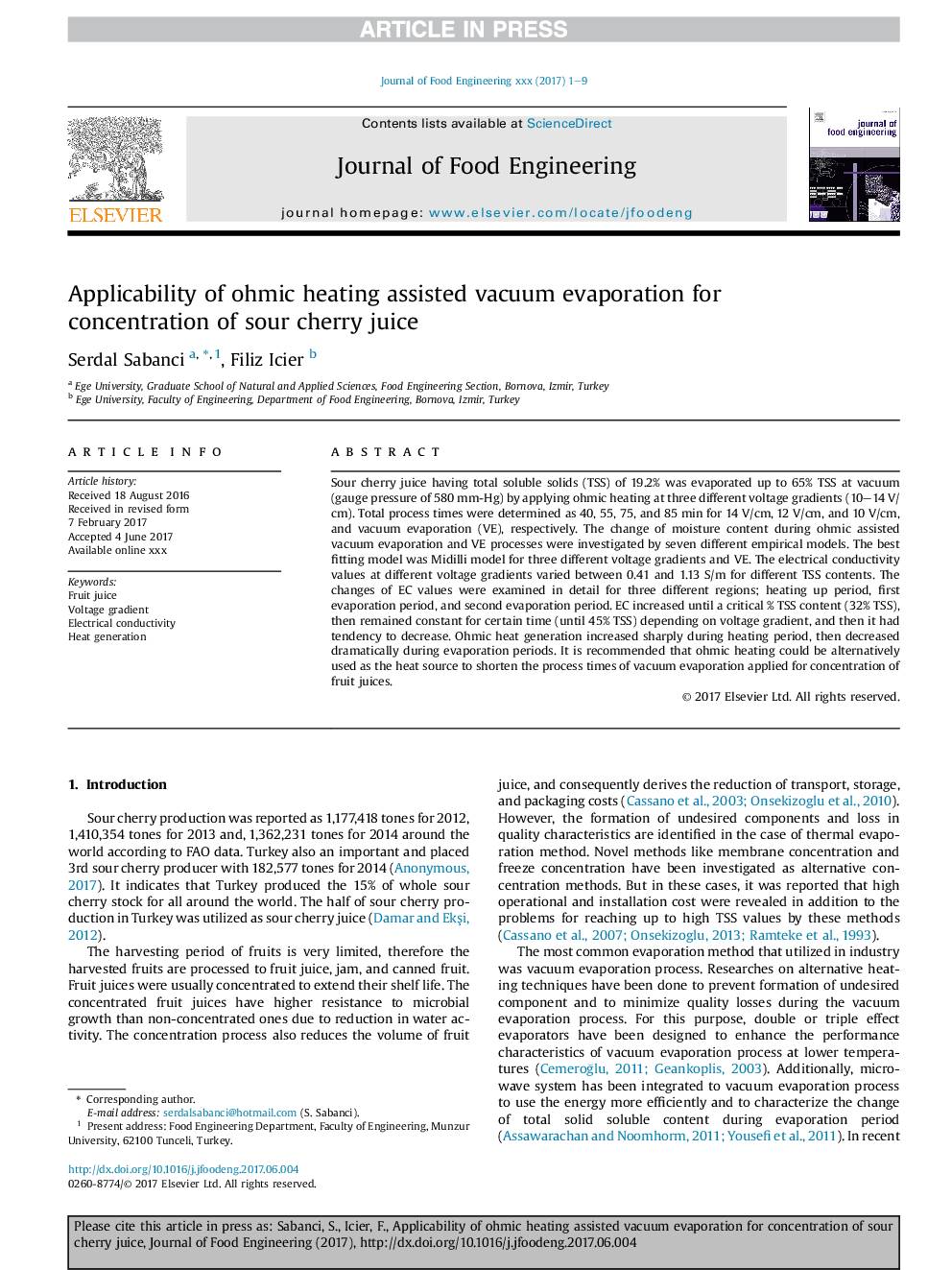| کد مقاله | کد نشریه | سال انتشار | مقاله انگلیسی | نسخه تمام متن |
|---|---|---|---|---|
| 4908818 | 1427089 | 2017 | 9 صفحه PDF | دانلود رایگان |
عنوان انگلیسی مقاله ISI
Applicability of ohmic heating assisted vacuum evaporation for concentration of sour cherry juice
ترجمه فارسی عنوان
کاربرد حرارت گرمایی کمک به تبخیر خلاء برای غلظت آب آلبالو می باشد
دانلود مقاله + سفارش ترجمه
دانلود مقاله ISI انگلیسی
رایگان برای ایرانیان
کلمات کلیدی
آب میوه، شیب ولتاژ، رسانایی الکتریکی، تولید گرما،
موضوعات مرتبط
مهندسی و علوم پایه
مهندسی شیمی
مهندسی شیمی (عمومی)
چکیده انگلیسی
Sour cherry juice having total soluble solids (TSS) of 19.2% was evaporated up to 65% TSS at vacuum (gauge pressure of 580Â mm-Hg) by applying ohmic heating at three different voltage gradients (10-14Â V/cm). Total process times were determined as 40, 55, 75, and 85Â min for 14Â V/cm, 12Â V/cm, and 10Â V/cm, and vacuum evaporation (VE), respectively. The change of moisture content during ohmic assisted vacuum evaporation and VE processes were investigated by seven different empirical models. The best fitting model was Midilli model for three different voltage gradients and VE. The electrical conductivity values at different voltage gradients varied between 0.41 and 1.13Â S/m for different TSS contents. The changes of EC values were examined in detail for three different regions; heating up period, first evaporation period, and second evaporation period. EC increased until a critical % TSS content (32% TSS), then remained constant for certain time (until 45% TSS) depending on voltage gradient, and then it had tendency to decrease. Ohmic heat generation increased sharply during heating period, then decreased dramatically during evaporation periods. It is recommended that ohmic heating could be alternatively used as the heat source to shorten the process times of vacuum evaporation applied for concentration of fruit juices.
ناشر
Database: Elsevier - ScienceDirect (ساینس دایرکت)
Journal: Journal of Food Engineering - Volume 212, November 2017, Pages 262-270
Journal: Journal of Food Engineering - Volume 212, November 2017, Pages 262-270
نویسندگان
Serdal Sabanci, Filiz Icier,
